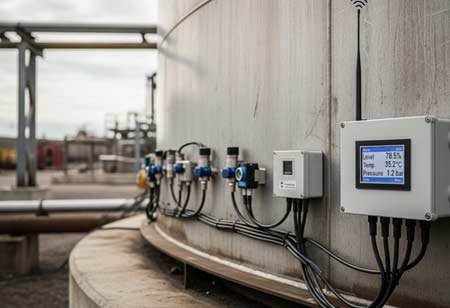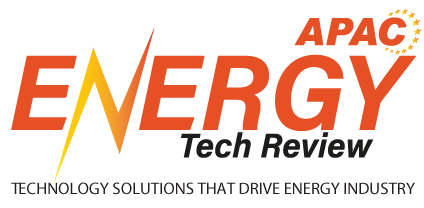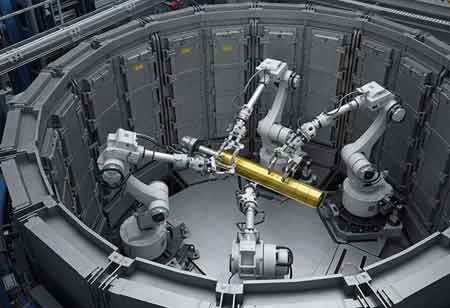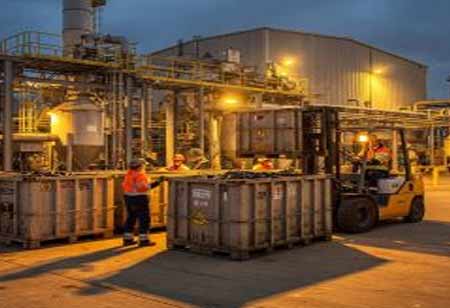CLOSE
Specials
I agree We use cookies on this website to enhance your user experience. By clicking any link on this page you are giving your consent for us to set cookies. More info
Be first to read the latest tech news, Industry Leader's Insights, and CIO interviews of medium and large enterprises exclusively from Energy Tech Review
Thank you for Subscribing
Tank Monitoring as a Service (TMaaS): A New Model for Operational Efficiency
TMaaS overhauls bulk liquid and gas storage management, transitioning from manual monitoring to a data-driven model that enhances efficiency, profitability, and operational insights across industries.

By
Energy Tech Review | Wednesday, September 10, 2025
Stay ahead of the industry with exclusive feature stories on the top companies, expert insights and the latest news delivered straight to your inbox. Subscribe today.
Industries reliant on bulk liquid and gas storage are transitioning from inefficient and hazardous manual gauging to an advanced, data-driven paradigm: Tank Monitoring as a Service (TMaaS). This innovative framework is transforming the management of critical stored assets, shifting businesses from a state of substantial capital expenditure and manual oversight to one characterized by operational efficiency, predictive analytics, and increased profitability. TMaaS extends beyond mere tank level measurement; it involves converting a static physical asset into a dynamic data-generating nexus that facilitates informed business decisions throughout the entire supply chain.
Transitioning from Ownership to Access
Traditionally, a business seeking to monitor its tanks would need to invest heavily in hardware, such as sensors and gateways, followed by a complex process of installation and integration, and then manage the software and ongoing maintenance. TMaaS abstracts this complexity entirely. Instead, businesses subscribe to a comprehensive service that provides end-to-end management of their tank monitoring needs. This service bundles the necessary hardware, network connectivity, a sophisticated software platform, and ongoing support into a single, predictable operational expense. This allows organizations to redirect their capital and human resources toward core business activities, while entrusting the intricate task of data collection and management to specialized providers.
Advanced IoT Technology and Its Implementation
The engine driving this service model is a sophisticated ecosystem of Internet of Things (IoT) technology. It begins at the tank itself, where advanced sensors are installed. These are not one-size-fits-all devices; they are specialized instruments capable of measuring a wide array of parameters beyond just volume. Depending on the substance being stored—be it fuel, chemicals, water, agricultural fertilizers, or industrial gases—these sensors can monitor temperature, pressure, and purity in real-time. The technology employed ranges from ultrasonic and radar sensors, which provide non-contact level measurement, to pressure transducers and guided wave radar, suitable for more demanding industrial environments. These ruggedized, often battery-powered devices are designed for reliability and longevity, capable of operating in harsh and remote conditions.
Once the sensor captures the data, it is transmitted wirelessly to a central cloud-based platform. This communication is typically handled by a variety of low-power, wide-area networking (LPWAN) technologies, such as cellular IoT (LTE-M/NB-IoT) or satellite communications, ensuring that even tanks in the most remote locations can be monitored effectively. This seamless connectivity is a cornerstone of the service, eliminating the need for on-site internet infrastructure and guaranteeing that data flows consistently and securely.
The true power of TMaaS is realized within the software platform. This is the central nervous system where raw data from countless tanks is aggregated, processed, and transformed into actionable business intelligence. Through intuitive web-based dashboards and mobile applications, logistics managers, procurement officers, and operational heads can gain an unprecedented, real-time view of their entire inventory landscape. They can visualize fill levels on a geographic map, analyze historical consumption patterns, and forecast future demand with remarkable accuracy. The platform is designed to generate automated alerts and notifications for predefined events, such as a tank level falling below a critical threshold or an unusually rapid drop that might indicate a leak, enabling a shift from reactive problem-solving to proactive management.
Transforming Operational Efficiency and Financial Strategies
The adoption of a TMaaS model unlocks a cascade of benefits that reverberate throughout an organization. The most immediate impact is a dramatic increase in operational efficiency. The elimination of manual "sticking" of tanks frees up valuable personnel for higher-value tasks and eradicates the inaccuracies and safety risks associated with manual checks. Logistics and distribution are transformed from a fixed-schedule, route-based system to an on-demand model. Deliveries can be optimized based on actual, real-time needs, resulting in fewer, more efficient truckloads. This not only significantly reduces transportation costs, fuel consumption, and carbon emissions but also prevents costly emergency deliveries and eliminates the risk of customer stock-outs.
Financially, the model is equally compelling. By shifting from a significant upfront capital investment (CapEx) to a predictable subscription fee (OpEx), businesses can improve cash flow and deploy capital more strategically. Inventory management becomes a science rather than an estimation. With precise data on consumption rates, companies can maintain leaner inventory levels, reducing carrying costs and minimizing the amount of capital tied up in stored products. Continuous monitoring helps prevent product loss due to spoilage, contamination, or undetected leaks, thereby directly protecting the bottom line.
The applicability of TMaaS spans a vast array of industries. In the fuel distribution sector, it ensures that gas stations and commercial fleets never run out of fuel. For the agricultural sector, it guarantees the timely availability of water, fertilizer, and fuel, which is critical during peak seasons. Chemical manufacturers and users rely on it to safely manage hazardous materials and ensure compliance with stringent environmental regulations. In the food and beverage industry, it monitors everything from bulk cooking oils and syrups to dairy products, ensuring production continuity and quality. Water and wastewater management entities use it to monitor reservoir levels and chemical treatment supplies, enhancing public service delivery.
TMaaS signifies a crucial advancement in industrial asset management, serving as a strategic enabler that transforms static storage tanks into intelligent, interconnected components of a digital ecosystem. By harnessing the capabilities of IoT and a service-based delivery model, TMaaS empowers businesses to achieve essential visibility, data-driven insights, and operational agility, all of which are vital for success in an increasingly competitive environment. This unequivocally demonstrates how adopting a service-oriented, technology-driven methodology can yield unprecedented levels of efficiency, safety, and sustainability.

Copyright © 2025 Energy Tech Review. All rights reserved






